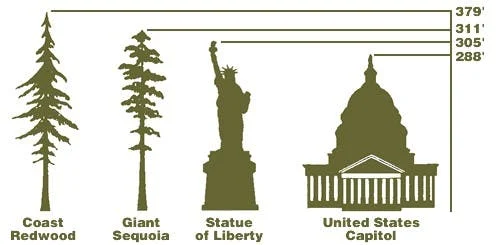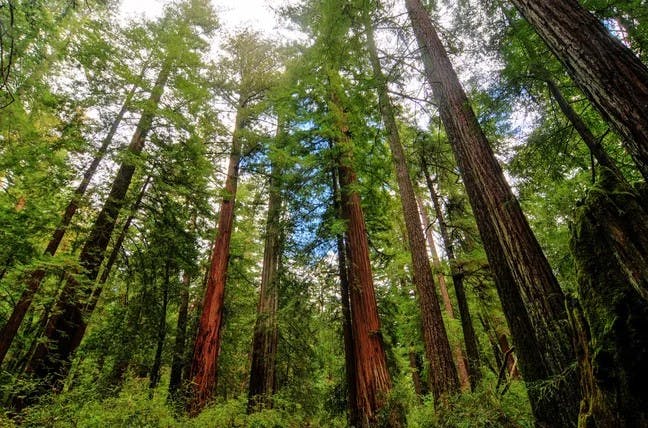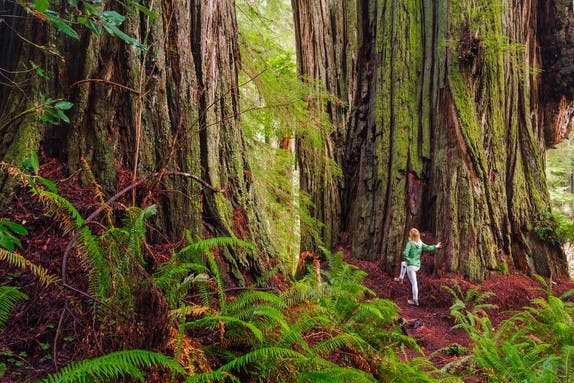Reaching for the Stars: The Hidden World of the Giant Coast Redwoods
In a secluded grove in Northern California stands Hyperion, rising higher than any known living tree on Earth. At 380 feet tall, this giant coast redwood pierces the sky, taller than Big Ben or the Statue of Liberty. Though few have glimpsed this elusive titan up close, giants like Hyperion inspire awe for these ancient inhabitants of America’s Pacific forests.

What allows coast redwoods to scale such staggering heights as they reach for the stars? Peering into their hidden world reveals the secrets of these gentle giants who have graced Earth for millennia.
Primeval Giants of the Pacific
Coast redwoods thrive in a narrow 500-mile belt from Big Sur to southern Oregon, anchoring mist-shrouded forests. Belonging to the Sequoia genus, they are the loftiest of all organisms, able to pump water 100 feet straight up trunks some 30 feet wide.
Redwoods are true ancients, with some surviving over 2,000 years. Many standing today were seedlings in Roman times, earning the species name “sempervirens” – always flourishing. Thanks to such prodigious longevity, redwoods gradually accumulate the mass to attain gravity-defying heights.
But growing tall is only half the battle – redwoods must also remain upright in their maritime climate. Luckily, anchoring features allow them to stand fast even when whipping winds roar in from the Pacific.

Built to Survive the Ages
Besides colossal height, coast redwoods thrive thanks to unique evolutionary adaptations:
- Shallow but wide-reaching root systems provide structural support. Spreading roots intertwine with neighbors, offering shared stability.
- Fibrous bark up to a foot thick resists fire and insects. The bark also contains tannins to hinder fungal growth.
- Needle foliage condenses coastal fog into moisture. Redwoods derive up to 40% of water from fog, reducing drought risk.
Together these traits equip redwoods to survive the ravages of time, storm, and flame – allowing them to persist for millennia.
Interconnected Forests
But Giant Coast Redwoods do not stand alone. They are interdependent, with the whole exceeding the sum of its ancient parts.
Coast redwoods rely on fungi that sheath their roots to aid nutrient and water absorption. Meanwhile they provide habitat for endangered wildlife who scatter seeds to regenerate the next generation of giants.
By banding together, redwood forests create ideal conditions for emergence of the tallest species on Earth. These complex cooperative systems allow sequoias to prosper.
Guardians Against Climate Change
Today these primeval titans are more vital than ever in combating climate change. Coast redwoods are Earth’s most powerful carbon capturers, sequestering three times as much CO2 as typical trees.
Each towering redwood removes 250 tons of carbon over its lifetime – equivalent to over 500 cars. Redwood groves collectively store more carbon than any other forest, with potential to offset significant fossil fuel emissions.
That’s why scientists now strive to clone and propagate the most ancient redwoods, hoping to cultivate “superforests” to mitigate climate change. Although still early, the research may allow us to harness the full potential of these ancient giants.

Standing Tall for the Ages
When gazing upward at Hyperion or strolling among its ancient kin, we encounter Nature’s transcendence. Redwoods are more than trunks and foliage – they are connections linking past to future. As our tallest living ambassadors, they impart timeless inspiration to care for this shared world.
From sprouting in antiquity to guarding our atmosphere today, coast redwoods show us what endures. If we wish these gentle titans to stand tall for another millennium, we must be as steadfast as the redwoods themselves in protecting our threatened Earth.



